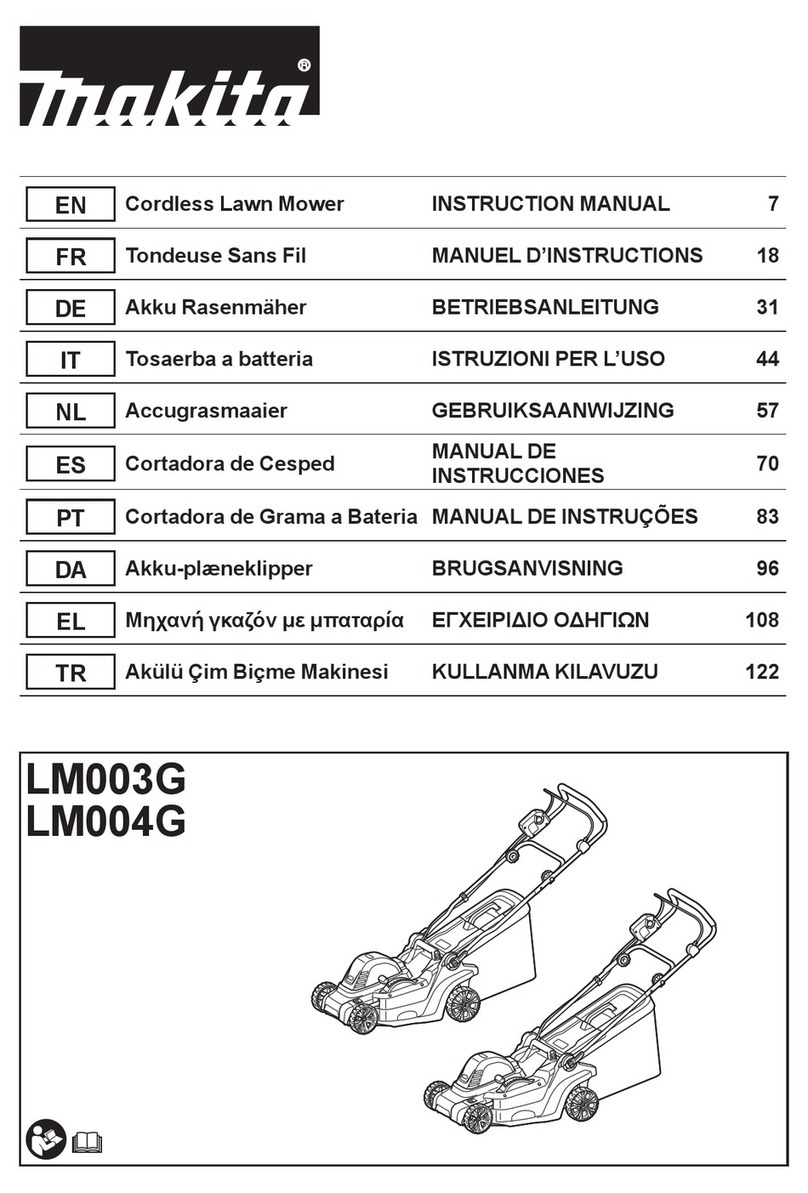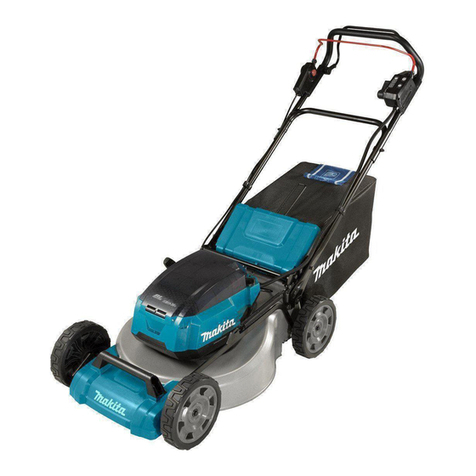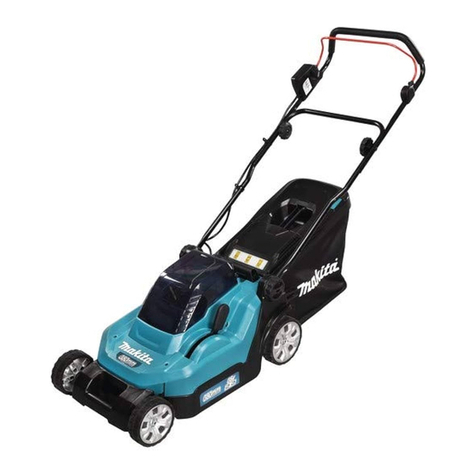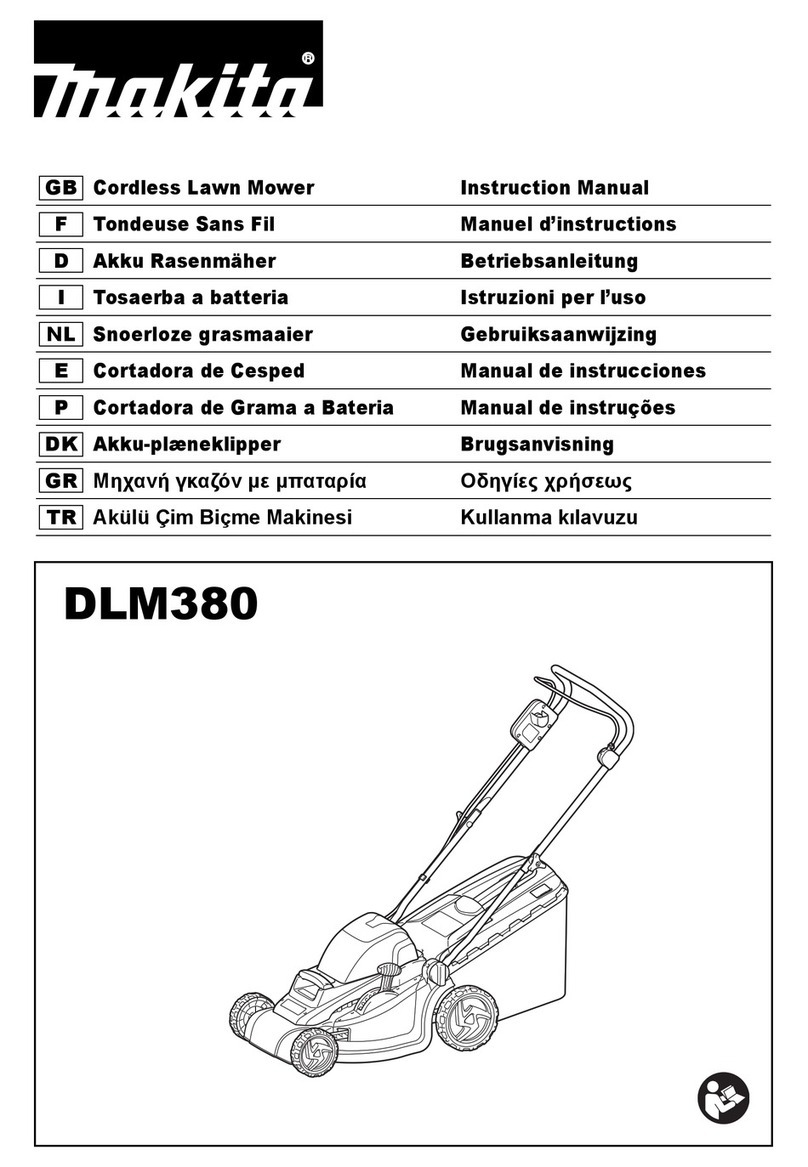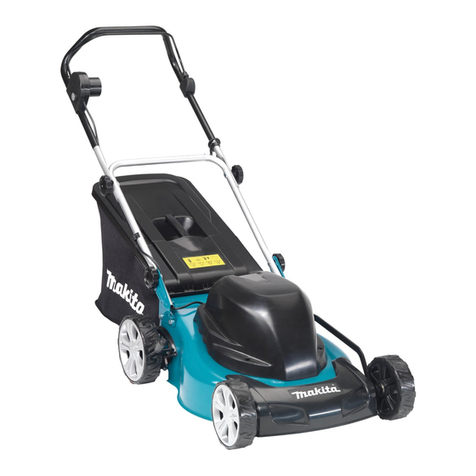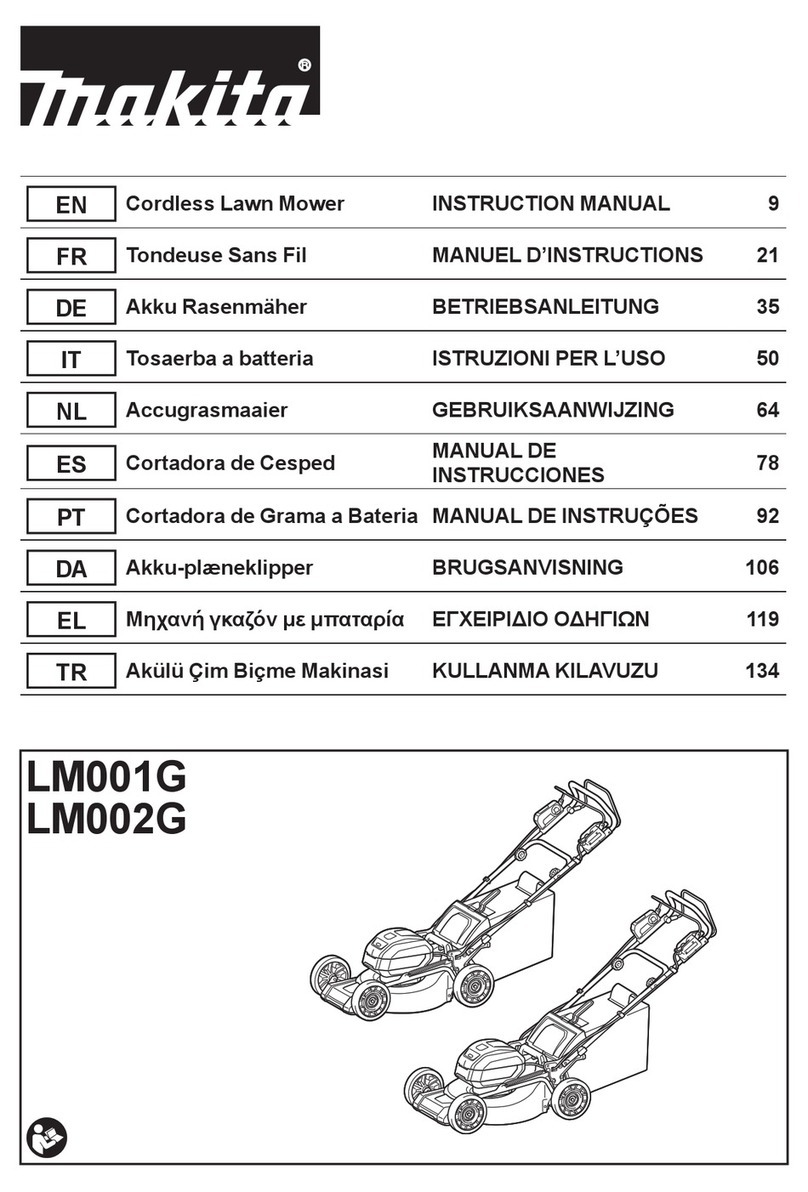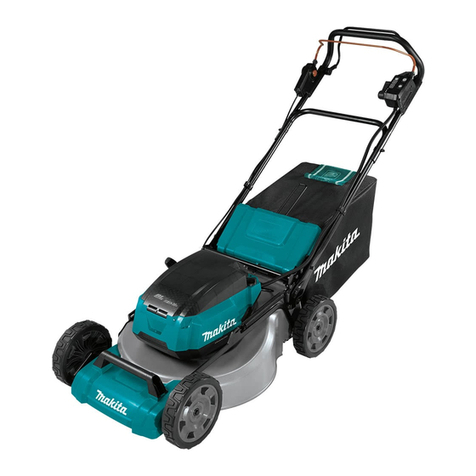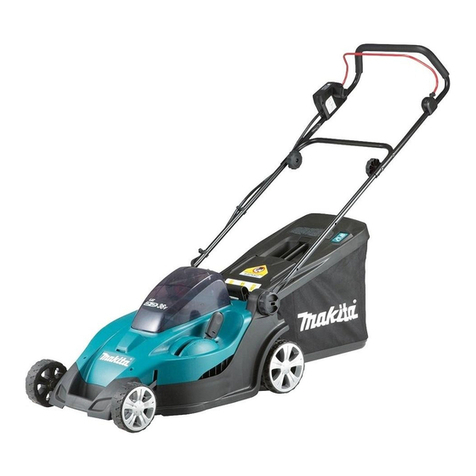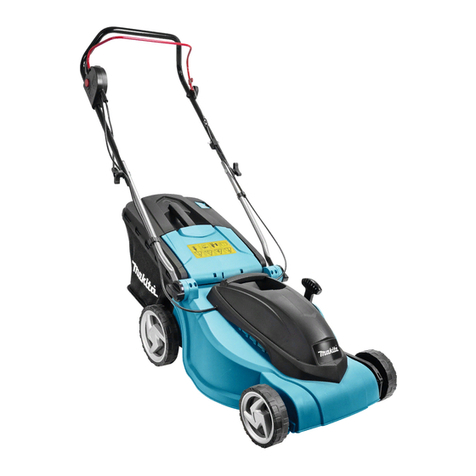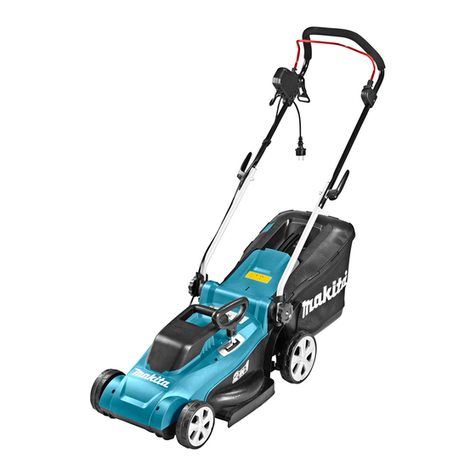
4ENGLISH
18. Don't grasp the exposed cutting blades or
cutting edges when picking up or holding the
appliance.
19. Never attempt to make cutting height adjust-
ments while mower is running if the mower
has cutting height adjustment feature.
20. Mow across the face of slopes, never up and
down. Exercise extreme caution when chang-
ing direction on slopes. Do not mow exces-
sively steep slopes. Poor footing could cause a
slip and fall accident.
21. Avoid operating the mower in wet grass.
22. Stop operation immediately if you notice
anything unusual. Switch o the mower. Then
inspect the mower.
23. Do not start the mower when standing in front
of the discharge opening.
24. Avoid using the mower in bad weather con-
ditions especially when there is a risk of
lightning.
25. When you use the machine on muddy ground,
wet slope, or slippery place, pay attention to
your footing.
26. Do not submerge the machine into a puddle.
27. When operating the machine, pay attention to
piping and wiring.
Maintenance and storage
1. Store Idle Lawn Mower Indoors - When not in
use, lawn mower should be stored in an indoor dry
and locked-up place - out of reach of children.
2. Maintain Lawn Mower With Care - Keep cutting
edges sharp and clean for best and safest per-
formance. Follow instructions for lubricating and
changing accessories. Inspect lawn mower cord
periodically and if damaged, have it repaired by
an authorized service facility. Keep handles dry,
clean, and free from oil and grease.
3. Keep machine free of grass, leaves, or other
debris build up. Keep guards in place and in
working order.
4. Keep blades sharp.
5. Use identical replacement blades only.
6.
Check the grass basket frequently for wear or
deterioration. For storage, always make sure the
grass basket is empty. Replace a worn grass bas-
ket with a new factory replacement one for safety.
7. Check grass basket components and the
discharge guard frequently and replace with
manufacturer’s recommended parts, when
necessary.
8. Check the blade mounting bolt at frequent
intervals for proper tightness.
9. Keep all nuts, bolts, and screws tight to
be sure the equipment is in safe working
condition.
10. Never remove or tamper with safety devices.
Check their proper operation regularly. Never
do anything to interfere with the intended
function of a safety device or to reduce the
protection provided by a safety device.
11. Be careful during adjustment of the mower
to prevent entrapment of the ngers between
moving blades and xed parts of the mower.
12. Always allow the mower to cool down before
storing.
13. When servicing the blades be aware that, even
though the power source is switched o, the
blades can still be moved.
14. Maintain or replace safety and instruction
labels, as necessary.
15. Do not leave the machine unattended outdoors
in the rain.
16. When storing the machine, avoid direct sun-
light and rain, and store it in a place where it
does not get hot or humid.
Battery tool use and care
1. Prevent unintentional starting. Ensure the
switch is in the o-position before connecting
to battery pack, picking up or carrying the
machine. Carrying the machine with your nger
on the switch or energizing machine that have the
switch on invites accidents.
2. Disconnect the battery pack from the machine
before making any adjustments, changing
accessories, or storing machine. Such preven-
tive safety measures reduce the risk of starting the
machine accidentally.
3. Recharge only with the charger specied by
the manufacturer. A charger that is suitable for
one type of battery pack may create a risk of re
when used with another battery pack.
4. Use machines only with specically desig-
nated battery packs. Use of any other battery
packs may create a risk of injury and re.
5. When battery pack is not in use, keep it away
from other metal objects, like paper clips,
coins, keys, nails, screws or other small metal
objects, that can make a connection from one
terminal to another. Shorting the battery termi-
nals together may cause burns or a re.
6. Under abusive conditions, liquid may be
ejected from the battery; avoid contact. If con-
tact accidentally occurs, ush with water. If
liquid contacts eyes, seek medical help. Liquid
ejected from the battery may cause irritation or
burns.
7. Do not use a battery pack or machine that is
damaged or modied. Damaged or modied
batteries may exhibit unpredictable behaviour
resulting in re, explosion or risk of injury.
8. Do not expose a battery pack or machine to
re or excessive temperature. Exposure to re
or temperature above 130°C (265°F) may cause
explosion.
9. Follow all charging instructions and do not
charge the battery pack or machine outside of
the temperature range specied in the instruc-
tions. Charging improperly or at temperatures
outside of the specied range may damage the
battery and increase the risk of re.
10. Have servicing performed by a qualied repair
person using only identical replacement parts.
This will ensure that the safety of the product is
maintained.
11. Do not modify or attempt to repair the machine
or the battery pack except as indicated in the
instructions for use and care.

